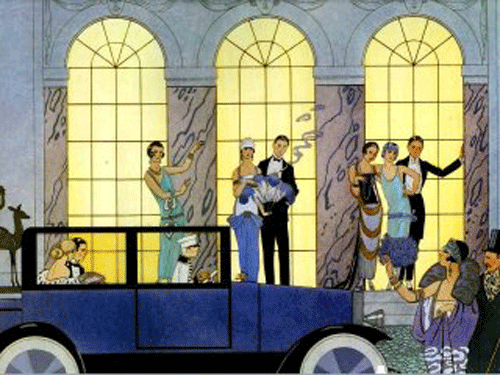| Performance Indicators:
P.S ELA-2 Reading Analysis: Cite strong and thorough textual evidence to support analysis of what the text says explicitly as well as inferences drawn from the text, including determining where the text leaves matters uncertain. A. Evaluate the relevant themes and synthesize how they are present in the novel in oral and written responses. P.S ELA-3 Reading Craft and Structure: Determine an author’s point of view or purpose in a text in which the rhetoric is particularly effective, analyzing how style and content contribute to the power, persuasiveness or beauty of a text. A. Understand SOAPSTone: Speaker, Occasion, Audience, Purpose, Subject, Tone P.S ELA-4 Writing Analysis: Write arguments to support claims in an analysis of substantive topics or texts, using valid reasoning and relevant and sufficient evidence. A. Select and limit a debatable thesis. |
INSTRUCTIONS: You are to analyze The Great Gatsby according to Freytag’s pyramidal structure. Summarize the story according to your understanding for each of the pyramid’s expressed developments. Included with your summary should be a brief passage from the novel (along with the page number in parenthesis) which best emphasizes your summary. You are required to include a passage for each of the Freytag stages.
The summary should be presented on a standard size poster board with an illustration of an essential scene or with illustrations of the prominent symbols in the story. The appearance of your work is an emphasis of the assignment.
The pyramid is due on DAY 20 of the syllabus; it is valued as a performance grade.
Appearance 25 %
Summaries according to Freytag’s pyramidal structure 25%
Anecdotal passages from the novel with page number 25%
Illustrations of scene(s) and/or symbols 25%
Although Gustav Freytag’s analysis of dramatic structure is based on five-act plays, the general framework can be applied (sometimes in a modified manner) to short stories, novels, and any storied conflict as well.
Exposition The exposition is the introductory information in a story/drama. The exposition provides the background information needed to properly understand the story, such as the essential characters and the setting.
Inciting Moment The inciting moment in a story/drama occurs when the reader understands the problem that the protagonist is confronted with.
Dramatic Question The dramatic question is a reflex of the inciting moment. The dramatic question is a question that the reader has about the welfare of the protagonist.
Rising Action During rising action, the basic internal conflict is complicated by the introduction of related secondary conflicts, including various obstacles that frustrate the protagonist’s attempt to reach his goal. Secondary conflicts can include adversaries of lesser importance than the story’s antagonist, who may work with the antagonist or separately, by and for themselves or actions unknown. In short, the rising action is the complication of the plot.
Crisis Situation The crisis situation occurs directly before the climax. The crisis situation is the point in the story where the reader/audience understands that the protagonist is about to win or lose his conflict.
Climax The Climax is the highest point of interest of a story/drama. The climax may represent a turning point, which marks a change, for the better or the worse, in the protagonist’s affairs. If the story is a comedy, things will have gone badly for the protagonist up to this point; now, the tide, so to speak, will turn, and things will begin to go well for him or her. If the story is a tragedy, the opposite state of affairs will ensue, with things going from good to bad for the protagonist. Simply put, this is where the main part happens or the most dramatic part.
Falling Action During the falling action, or resolution, which is the moment of reversal after the climax, the conflict between the protagonist and the antagonist unravels; remaining questions in the reader’s/audience’s mind are addressed. The falling action might contain a moment of final suspense, during which the final outcome of the conflict is in doubt. Summary: The falling action is that part of the story in which the main part (the climax) has finished and you’re heading to the conclusion.
Dénouement The dénouement (pronounced /deɪnuːˈmɑ̃ː/, /deɪnuːˈmɒn/, or UK /deɪˈnuːmɑ̃ː/; French: [denuˈmɑ̃]) comprises events between the falling action and the actual ending scene of the drama or narrative and thus serves as the conclusion of the story. Conflicts are resolved, creating normality for the characters and a sense of catharsis, or release of tension and anxiety, for the reader. Etymologically, the French word dénouement is derived from the Old French word denoer, “to untie”, and from nodus, Latin for “knot.” Simply put, dénouement is the unraveling or untying of the complexities of a plot. The dénouement is represented as a lesson observed by the reader/audience about the protagonist and his/her problem.


